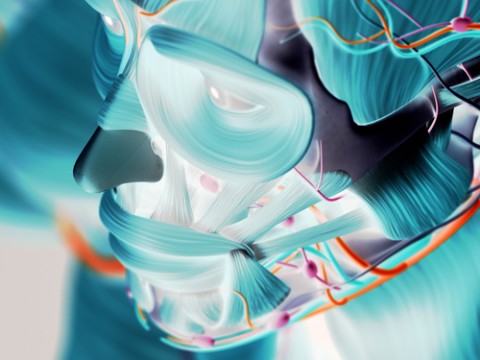 You may have heard the term ‘neuromuscular dentistry’ used around the practice before, or read about neuromuscular dentistry here on our blog. Neuromuscular dentistry is dentistry with a purpose, and that purpose is to realign the teeth, joints, muscles, and bones of the jaw to an optimal position. By doing this, we can reduce or cure the symptoms of TMJ disorder, eliminating the chronic pain experienced by many TMJ sufferers. Similar to neuromuscular dentistry is the field of neuromuscular orthodontics. Neuromuscular orthodontics work to relax the positioning of the muscles of the upper and lower jaws, which in turn allows for optimal shaping and positioning of each jaw. This translates to greater comfort for the patient, and better, longer lasting results following orthodontic treatment.
You may have heard the term ‘neuromuscular dentistry’ used around the practice before, or read about neuromuscular dentistry here on our blog. Neuromuscular dentistry is dentistry with a purpose, and that purpose is to realign the teeth, joints, muscles, and bones of the jaw to an optimal position. By doing this, we can reduce or cure the symptoms of TMJ disorder, eliminating the chronic pain experienced by many TMJ sufferers. Similar to neuromuscular dentistry is the field of neuromuscular orthodontics. Neuromuscular orthodontics work to relax the positioning of the muscles of the upper and lower jaws, which in turn allows for optimal shaping and positioning of each jaw. This translates to greater comfort for the patient, and better, longer lasting results following orthodontic treatment.
While in many ways, neuromuscular orthodontics is quite similar to traditional orthodontics, it also differs in some major ways. While both branches of orthodontics use similar appliances and have the same end goal in mind (to straighten the teeth and perfect the smile) how they get there is what sets them apart. In regular orthodontics, more emphasis is placed on improvising as the treatment progresses, with only a general idea of how to get there. With neuromuscular orthodontics, we focus more on crafting a precise treatment plan that maps out exactly what we want to do for treatment, and exactly what we want the outcome to be.
Neuromuscular orthodontics is better for the patient because it not only maps out a perfectly tailored treatment plan, but it focuses on the best way to achieve the patient’s optimal tooth positioning. With traditional orthodontics, the goal is a beautiful smile – but it often seems like there should be a disclaimer that says ‘a beautiful smile at any cost’- with that cost usually being a great deal of pain. On the other hand, neuromuscular orthodontics works with your body to not just create a beautiful smile, but to position the teeth in such a way that the patient won’t experience the discomfort that is often experienced in traditional orthodontics. This pain comes from forcing the teeth and jaw into an unnatural positon, but with neuromuscular orthodontics, it’s not an issue because we’ve already relaxed the muscles of the upper and lower jaw prior to the orthodontic appliances being placed. This also means your body will be less likely to resist the treatment, which translates to a greater level of comfort before, during, and after treatment. This also means you’ll not only be less likely to suffer from TMJ symptoms, but your orthodontic treatment results will last longer, because that tension in your joints, muscles, and bones won’t be fighting the new positioning and trying to put the teeth and palate back to their original position.
But neuromuscular orthodontics isn’t just for adults- it can benefit anyone, especially children. Children are generally easier to treat with orthodontic procedures because in most cases, the chronic problems associated with a misaligned bite have not yet had time to manifest. But neuromuscular orthodontics is still extremely beneficial to children, because their mouths are still growing. Neuromuscular orthodontics takes this growth into account when developing a treatment plan. Using neuromuscular dentistry, we can actually predict and then ‘map out’ the mouth’s future growth. From there, we can design treatment plan that will estimate where we can expect space, movement, and expansion of the patient’s teeth and jaw. This translates to a higher rate of success, because we can align the teeth in such a way that their alignment will not be affected by future growth. With neuromuscular orthodontics, we are essentially "directing the growth" of the teeth in a way that suits the optimal alignment of the mouth- and allowing for the body to influence the development and growth of the bony structures- even in adult patients. If you’re interested in learning more about how neuromuscular orthodontics can benefit you or your family, give Dr. Lederman’s office a call at 516-882-1764.